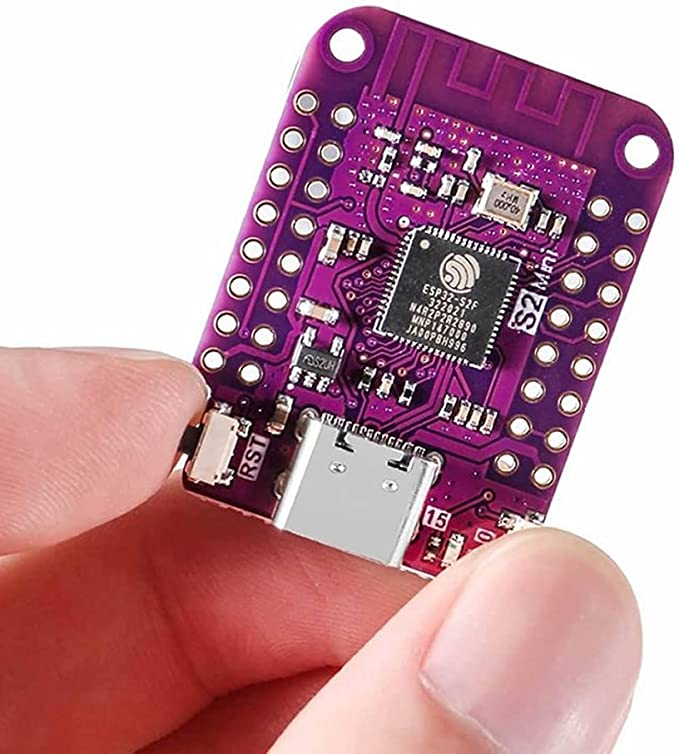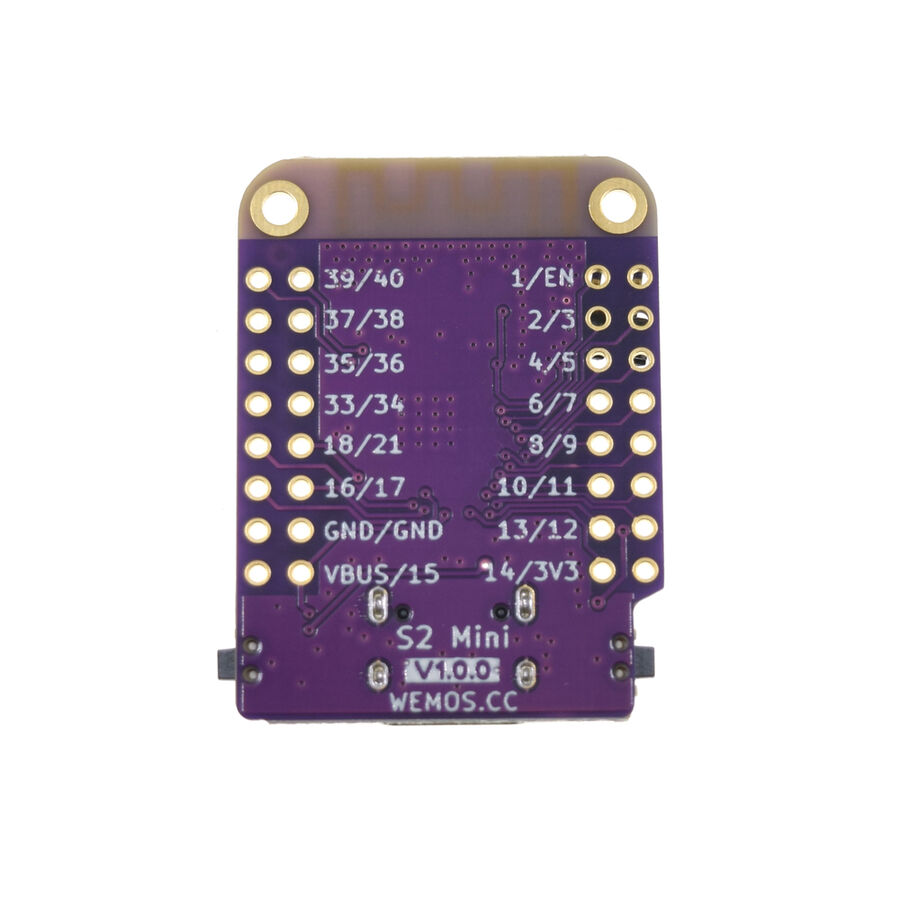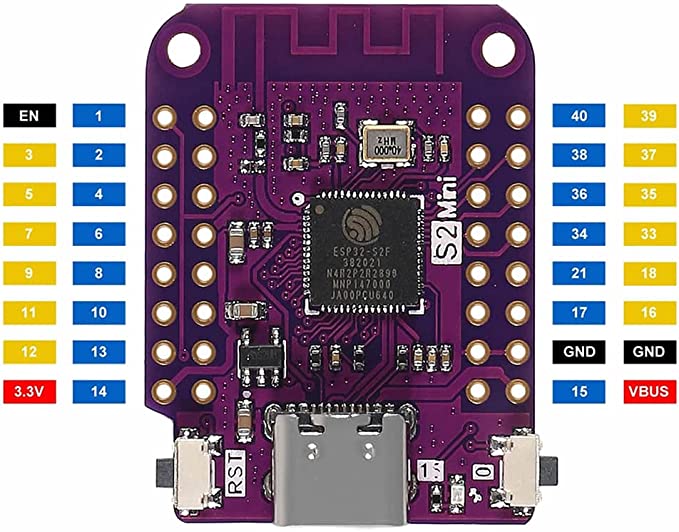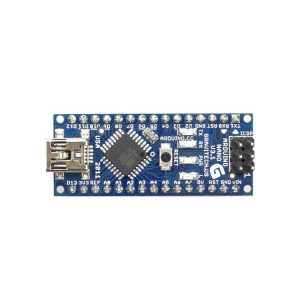Açıklama
ESP32-S2FN4R2 S2 Mini V1.0 Wifi Geliştirme Kartı MicroPython, Arduino IDE ve ESP-IDF uyumludur.
- ESP32-S2FN4R2 WIFI IC Tabanlı
C Tipi USB
4MB Flash
2MB PSRAM
ADC, DAC, I2C, SPI, UART, USB OTG
MicroPython, Arduino ve ESP-IDF ile uyumlu
LOLIN D1 mini uyumlu
Teknik Özellikleri
Üretici Firma China
Çalışma Gerilimi 3.3V
Dijital G/Ç Pinleri 27
Saat hızı 240MHz
Flash 4M Bytes
PSRAM 2M Bytes
Boyut 34.3*25.4mm
Ağırlık 2.4g
Örnek Arduino Kod:
/*
Blink without Delay
Turns on and off a light emitting diode (LED) connected to a digital pin,
without using the delay() function. This means that other code can run at the
same time without being interrupted by the LED code.
The circuit:
– Use the onboard LED.
– Note: Most Arduinos have an on-board LED you can control. On the UNO, MEGA
and ZERO it is attached to digital pin 13, on MKR1000 on pin 6. LED_BUILTIN
is set to the correct LED pin independent of which board is used.
If you want to know what pin the on-board LED is connected to on your
Arduino model, check the Technical Specs of your board at:
https://www.arduino.cc/en/Main/Products
created 2005
by David A. Mellis
modified 8 Feb 2010
by Paul Stoffregen
modified 11 Nov 2013
by Scott Fitzgerald
modified 9 Jan 2017
by Arturo Guadalupi
This example code is in the public domain.
https://www.arduino.cc/en/Tutorial/BuiltInExamples/BlinkWithoutDelay
*/
// constants won’t change. Used here to set a pin number:
const int ledPin = 15; // the number of the LED pin
// Variables will change:
int ledState = LOW; // ledState used to set the LED
// Generally, you should use “unsigned long” for variables that hold time
// The value will quickly become too large for an int to store
unsigned long previousMillis = 0; // will store last time LED was updated
// constants won’t change:
const long interval = 1000; // interval at which to blink (milliseconds)
void setup() {
Serial.begin(115200);
delay(100);
pinMode(ledPin, OUTPUT);
}
void loop() {
// here is where you’d put code that needs to be running all the time.
// check to see if it’s time to blink the LED; that is, if the difference
// between the current time and last time you blinked the LED is bigger than
// the interval at which you want to blink the LED.
unsigned long currentMillis = millis();
if (currentMillis – previousMillis >= interval) {
// save the last time you blinked the LED
previousMillis = currentMillis;
Serial.println(“ok”);
// if the LED is off turn it on and vice-versa:
if (ledState == LOW) {
ledState = HIGH;
} else {
ledState = LOW;
}
// set the LED with the ledState of the variable:
digitalWrite(ledPin, ledState);
}
}






